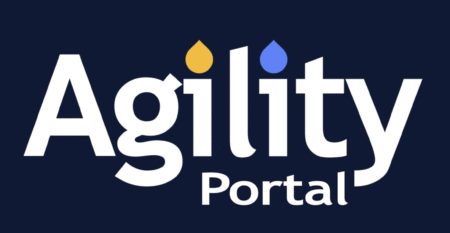Thousands of couples across the UK jointly own rental properties, often assuming that income and capital gains will automatically be split 50/50 between them for tax purposes. In reality, this assumption could cost them up to £18,000 in unnecessary tax, particularly if one partner is a higher-rate taxpayer and the other pays tax at the basic or even zero rate. The often-overlooked solution? Form 17.
Form 17 allows couples to legally declare a different beneficial ownership split, enabling rental income and capital gains to be taxed according to actual ownership—rather than an automatic 50/50 assumption by HMRC. When used correctly, it can dramatically reduce a couple’s tax bill.
This article explains how Form 17 works, the risks of ignoring it, and how couples can use it to avoid large tax liabilities—while adhering to HMRC’s rules.
1. The Default HMRC Rule Most Couples Don’t Know About
Many married couples or civil partners assume that HMRC will tax rental income based on whoever receives the income or pays the mortgage. However, by default:
-
HMRC taxes rental income 50/50 between spouses or civil partners if the property is jointly owned.
-
This applies even if one partner contributes 100% of the deposit, mortgage payments, or receives all the income.
This rule is simple but rarely tax-efficient, especially when one spouse is a higher-rate taxpayer (40% or 45%) and the other pays tax at a lower or basic rate.
Example:
-
Property makes £30,000 profit per year in rental income.
-
Husband earns £80,000 yearly (higher-rate taxpayer).
-
Wife earns £15,000 (basic-rate taxpayer).
-
HMRC taxes them 50/50 → £15,000 each.
-
Husband pays 40% = £6,000 tax.
-
Wife pays 20% = £3,000 tax.
-
Total tax paid = £9,000
But if they could legally shift more ownership to the wife, the total tax could drop significantly.
2. What Is Form 17?
Form 17 is a declaration submitted to HMRC where married couples or civil partners inform the tax office that they own the property in unequal shares and want income taxed accordingly.
To qualify:
-
The property must be jointly owned.
-
The couple must live in the UK or be subject to UK property tax.
-
They must own the property as Tenants in Common, not Joint Tenants.
-
They must provide evidence of actual unequal ownership.
Once accepted, HMRC taxes income in line with the declared ownership percentages.
3. The Legal Requirement: Beneficial Ownership Must Match Reality
HMRC will only accept Form 17 if:
-
The couple legally holds the property in unequal shares.
-
This is usually established via a Declaration of Trust.
-
They can prove financial contributions reflect the split.
False declarations or “paper-only” changes without legal backing can be rejected and even investigated.
4. Why Ignoring Form 17 Can Cost Up to £18,000
When couples ignore Form 17, income continues to be taxed 50/50. For high earners, this means paying more tax than legally necessary.
Example Calculation:
-
Rental profit: £40,000 per year
-
Spouse A: earns £90,000 (40% tax rate)
-
Spouse B: earns £12,000 (20% tax rate or even £0 if under allowance)
Without Form 17:
-
Both taxed on £20,000
-
A: £8,000 tax
-
B: £4,000 tax
-
Total = £12,000
With Form 17 declaring 90/10 split to B:
-
A taxed on £4,000 → £1,600 tax
-
B taxed on £36,000 → £7,200 tax
-
Total = £8,800
Tax saved = £3,200 per year
Over five years, that’s £16,000. Add capital gains planning → total savings can exceed £18,000.
5. Form 17 and Capital Gains Tax (CGT)
Income tax is only one side of the coin—CGT is another.
If a couple later sells the property:
-
CGT will be applied according to the beneficial ownership split declared in Form 17.
-
Each person gets a CGT annual exemption (£3,000 for 2025/26).
-
If most of the gain is shifted to the lower-tax partner, the couple could save thousands.
6. Step-by-Step: How to Use Form 17 Correctly
Step 1: Change Legal Ownership (if necessary)
Convert property ownership to Tenants in Common and draw up a Declaration of Trust stating the percentage splits.
Step 2: Complete Form 17
Download from HMRC, fill in ownership shares, sign and date.
Step 3: Submit Within 60 Days
HMRC must receive it within 60 days of signing. Miss this deadline, and it becomes invalid.
Step 4: Keep Records
Retain:
-
Mortgage statements,
-
Declaration of Trust,
-
Land Registry records,
-
Rental income statements.
7. When Form 17 Should NOT Be Used
Form 17 is not always beneficial.
Avoid using it if:
-
Both spouses are basic-rate taxpayers.
-
One partner receives child benefits and shifting income might trigger the High Income Child Benefit Charge.
-
It could affect Student Loan Repayments or Pension Contributions.
-
You aren’t genuinely altering legal ownership—HMRC will investigate false claims.
8. Example Scenarios
✅ Beneficial:
A high-earning doctor and a part-time teacher jointly own a rental property. Tax savings of £3,000 per year with Form 17.
❌ Not Beneficial:
Both partners earn £35,000. Form 17 won’t create any tax savings and adds admin.
⚠ Complicated Case:
Couples with mixed residential and furnished holiday lets – professional advice is essential.
9. Professional Support Matters
While Form 17 is only two pages long, the legal structure behind it—Declaration of Trust, mortgage lender consent, CGT implications—can be complex. This is why many couples seek help from experienced advisers such as My Tax Accountant to avoid mistakes and maximise savings legally.
Conclusion
Form 17 is one of HMRC’s most powerful yet misunderstood tax tools for jointly owned property. When used properly, it enables couples to align their tax position with their true financial arrangement—potentially saving £18,000 or morein tax over a few years.
However, it must be done legally, accurately, and within the rules. With property taxes tightening and mortgage rates rising, now is the right time for couples to review their ownership structure and make informed decisions.
















